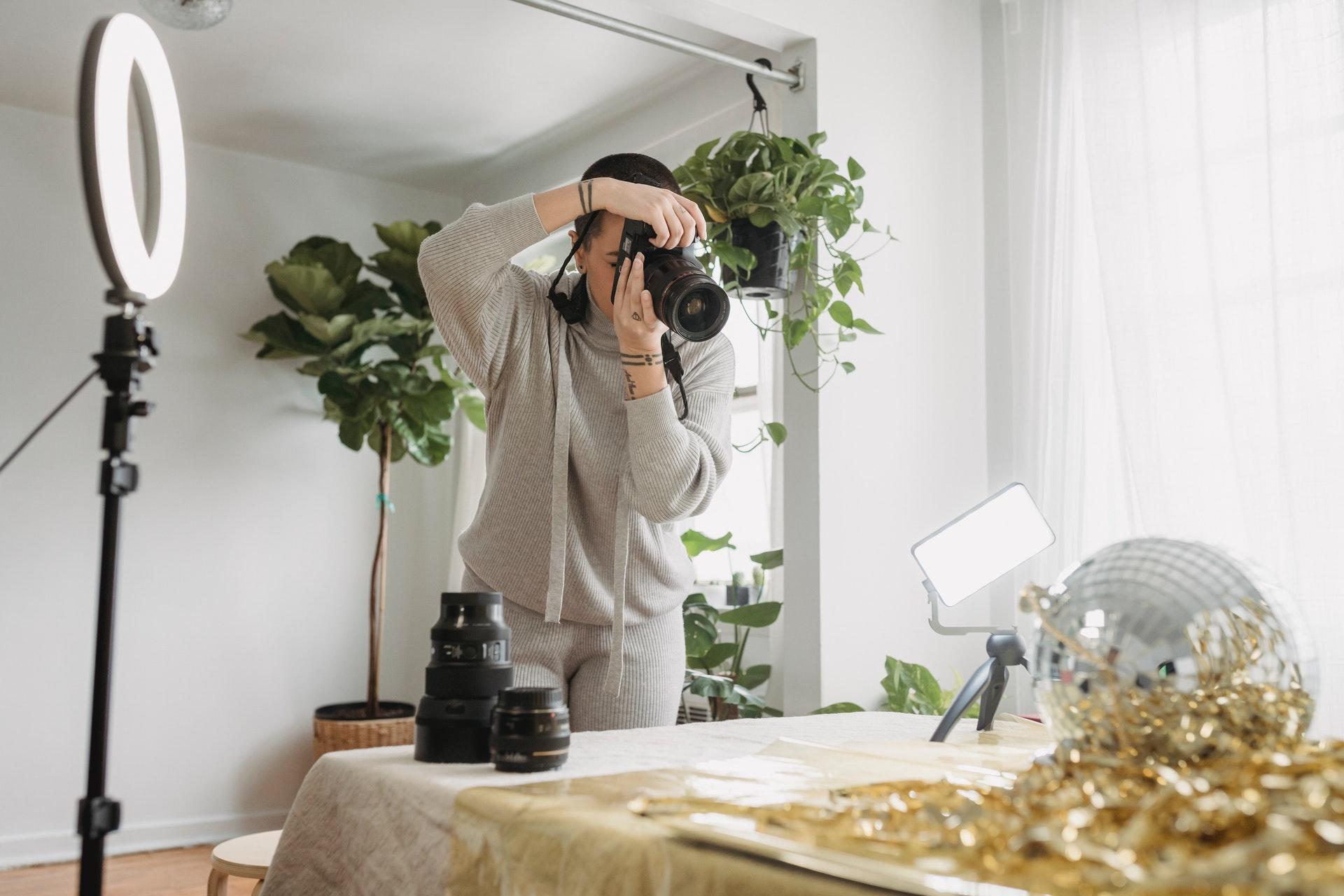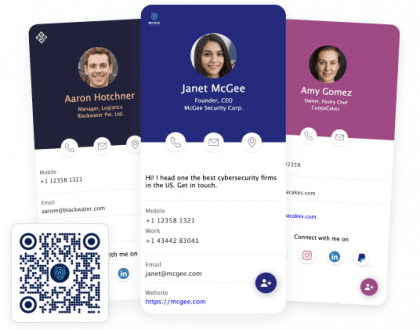A Beginner’s Guide to Product Photography – Print Peppermint

by IBRAHIM
A Beginner’s Guide to Product Photography – Print Peppermint

Product photography isn’t just for show. Quite literally.
Yes, the core purpose is to show your products to potential consumers. But it’s much more than that. What is it then?
These are the answers which we will discuss today. Additionally, we will learn comprehensive product photo ideas, tips, common mistakes. Let’s begin!
What is Product Photography?
If you need to sell it, you need to show it.
It has been an age-old tradition to visit stores, view a favorable item, and purchase it if we feel convinced. In that “convincing” factor, there is more to it than the product itself. This includes the salesperson, the store’s environment, the price, etc.
The rise of eCommerce has nudged humans to partake in such shopping activities digitally. And thus, the prevalence of product photography. It shows the entire world what a shop’s products look like, without having to actually visit the shop. Although this photography niche has existed even before eCommerce has, it was never such a large industry that it is today.
Why is Product Photography Important?
There is more to photography than what meets the eye.
Product photography captures the essence of what needs to be shown and therefore sold. It’s not just about taking a picture of a product. How a product appears to the human eye, what statement the photo is making, and whether it’s serving the intended purpose – are all encompassed in a professional product photo.
Anyone and everyone can take a picture, right? You don’t need a professional picture to sell your products. You just need to show it.
Oh, but you do need to show it. Coming back to the offline shopping analogy, showrooms that are visually more aesthetic and professional have a higher sales rate.
Imagine walking into an official smartphone showroom and walking into a local reseller store that sells the same phones. Why is it that you’ll make a likely purchase from the official showroom even though the reseller is providing the same object at the same price and warranty?
Aesthetics, reliability, branding, trust – these are just some of the things that professional photography enhances.
Product Photography Ideas
Now that we understand what it’s all about, let’s discuss some useful ideas!
Create a Scenery
Your product photo doesn’t have to include just the product. You can create an entire scenery using multiple props and items.
These items do not necessarily have to resemble your product. If you’re capturing the picture of orange-colored sneakers, you can keep actual oranges in the photo background to provide a light-hearted, organic feel.
Creating a composition is the ultimate goal. Different elements can be used to create a suitable composition and, thus, scenery. Or you could make a simple, minimalistic scenery with little to no background elements. Let your own persona flourish as there are no rules here!
Be Careful With Reflections
Reflections are an important aspect of photography that cannot be overlooked. It can break or make a picture.
In most cases, it’s best to minimize reflections. You can do this by adjusting your lighting setup before the photoshoot. Blackboards, diffusers, and absorbers can immediately null harsh shadows. Place them strategically as not to ruin the framing whilst serving their purpose.
Post-production can take it one step further by finely removing all minor and major reflections. Consult with Offshore Clipping Path about whether they provide it or not. If you don’t plan to outsource it, you can edit it yourself, but you must have professional photo editing skills first.
Though reflections can be creatively utilized to bring out the character in a product, it should be done sparingly. Unless you have experience or you know exactly what you want in a photo, just avoid reflections altogether.
Freeze Your Frame!
Since the advent of fast-shutter cameras, freeze-frame photography has been a trending phenomenon. A rabbit hop frozen in time, a speeding jet stopped in the picture – are all examples of freezing the frame. It’s also known as stop motion photography.
Freeze-frames have a distinct place in product photography. One popular example is a sprite bottle being dropped into a waterbody, creating splatters. Capturing this movement without any form of blurriness is essentially freezing the frame completely. Such a shot invokes a sense of refreshment and wonder, instilling the brand target and persona.
Stop motion photography doesn’t necessarily have to be taken for branding. But you can just do them because they look cool!

Try Flat Lay Photography
Flat lay photography is a quick and cost-effective way of capturing unique product images. Almost all product niches can be presented through this method.
The first thing that you’d require is a large, flat surface. It could be a tabletop or the floor, whichever is more preferable to you. Place your backdrops on this flat surface along with the product, and shoot! You can utilize the previous ideas e.g. creating scenery and composition to bring out the best of this method.
Always remember that the products must appear flat i.e. the camera angle should directly face the tabletop/floor. You can change angles, but it wouldn’t appear flat anymore. The goal of flat lay photography is to present multiple pictures with the same “flat” feeling, ensuring visual consistency.

360 Degree Photos
If you want to take it up a notch, you could try taking pictures from all sides. Certain eCommerce platforms allow 360-degree rotation of a product. Whether it be for manual rotation or automatic rotation, 360-degree photos will enhance your store’s image.
Not all products may benefit from 360-degree photos. A glass mug may not have anything new to show from each angle. Thus, think wisely of which products to take fully rotatable pictures of.
Highlight Distinct Colors
If you’d like to highlight the colors of your product, you can do so in several ways. Firstly, you can add props of the same color to put emphasis. Or, you could do the opposite and add a contrasting color.
Whichever you choose, do not infuse the picture with too many colors. Complementary colors are a no-no, but even a variety of contrasting colors can kill the focus of the main product.
Another way to highlight the color is by using lighting to focus on those colors or rotating the product to show them more. Of course, post-production must be used to calibrate and polish these highlighted colors.
Colored Smoke
Smoke bombs have always been popular for cultural events. Did you know that they are popular with product photography too?
You can induce dramatic effects to your product with either a smoke generator or a bomb. Additionally, you can use the freeze-frame technique to create a “moving” feel with smoke. Make sure the color of the smoke suits your product.
Product Variations
Let’s say your product is a box. A box can be opened, closed, and completely taken apart. For all these variations, take pictures. Never let your consumer remain in doubt as to how to product functions.
Even if your product has no functional variational, it may have color variations. Include all of the colors in your product showcase. Leave no variation behind, and you’ll gradually see the results through consumer trustworthiness.
Product Photography Tips
Hopefully, the ideas gave you a sense of taking your product photos further. Now, these tips will save you from a lot of potential pitfalls in your photography journey.
Pick The Right Place
Location is important for product photos. If you’re shooting inside a studio, it may not matter. But not all product photos happen inside a studio. Some shots look better when taken on natural grass, sand, and concrete.
Whichever location you choose, make sure that it suits your product and the purpose. For example, you can place a boot on a muddy pile to emphasize durability. But that muddy pile has to be aesthetic as well as dirty. Sure, you can modify it to look better, but there are certain things you won’t be able to control, like distant objects in the background. Thus, pick your place wisely.
Camera Tips
There are two kinds of cameras that are typically used for photography. For each of these cameras, there are different tips that could help your end result.
Mobile Camera
Mobile cameras are inexpensive and easy but have a lot of limitations. However, it’s not true that you always need a DSLR for product images. Most low-budget or even medium-budget eCommerce stores start their businesses with mobile photography. Here are certain things to give your mobile photography an upper edge.
Clip-on lenses are rising in popularity. These lenses can be used to take macro shots and higher resolution shots with mobile cameras that aren’t so advanced. You can certainly use them for capturing your product photos.
Safeguard your camera lens at all times. Mobile cameras get scratched easily, degrading their usability. Keeping a lens protector on it will ensure that only the protector gets scratched and can be replaced anytime if needed.
DSLR Camera
DSLR cameras are certainly better. And you can use these tips to make them even better.
We often adjust camera settings to suit a photo perfectly. Did you know that you can store these settings in-camera?
Creating presets of your perfected camera setting will save up a lot of time for future photography sessions. If any tweaks are needed, you can always create tweak these presets to create other presets. But editing the parameters from scratch during each and every photo session is going to only kill your time and patience.

Lighting Setup Tips
Lighting is one of the overlooked intricacies of eCommerce photography. After all, the saying does go – Lights. Camera. Action!
Inadequate lighting will always result in a gloomy image. Professional photographers can use the darkness to create dramatic shots. But for beginners, we always recommend starting by capturing standard, well-lit images.
The general rule is to use 3-4 lights. A key light to focus on the product, a fill light to fill the space, a background light to illuminate the background, and extra light to fill any dark areas.
So many lights may be troublesome for a smaller studio space and budget, thus you can use another technique – bounce cards.

Bounce Cards to Illuminate
Reflectors, otherwise known as bounce cards, can be used to reflect right in areas where there is little light. Using multiple light sources may not be feasible for everyone. Additionally, it also results in a blown-out image.
Bounce cards do the work of spreading out the light without any harshness or electricity cost!
Uses of Tripod
A good tripod will give you great photos. A great tripod will give you excellent ones. Most high-end tripods offer full adjustability without compromising sturdiness.
The adjustability helps in the sense that your camera viewpoint can be directed from any angle you like. Yes, you can shoot handheld to achieve these viewpoints. But the micro-vibrations caused by your hand will always influence the sharpness of your photograph. Plus, a tripod will help keep your camera angle in place whilst adjusting other things like lighting and photo composition.
Photography Backdrops vs Backgrounds
Backdrops are a quick and easy solution. Paired with good lighting, a backdrop will get the job done – it has been for most eCommerce businesses.
But using backgrounds is a completely new ball game. You need to have a good experience with photography in order to pull it off. Product photos with backgrounds capture a sense of originality that generic product photos don’t. However, this entirely depends on your eCommerce platform. Some platforms only allow white backdrops. So do ensure the specifications of your platform before shooting.
Post-Production Services
Whichever idea you implement and tip that you utilize, your product photo needs post-processing. Without it, it will only be a great photo but never a professional one.
Post-production work each and every minute detail of your photo is perfected, starting from spot healing, color correction, shadow correction, and more. This polishing process ensures consistency and excellence in your photo, regardless of how it was shot.
You could do all the post-processing work yourself. But that would mean hours and hours of editing work. Plus, you need to have a firm grasp of photo editing software to do it.
That’s why professional photographers outsource their post-processing work. It makes their entire workflow more efficient as they can invest more time in shooting more images. Outsourcing product photo editing is a must-do.
Common Mistakes in Product Photography
Here are some mistakes that many of us commit in this niche.
Limitation of Knowledge
Before starting out, we shouldn’t be completely oblivious as to what we’re doing. Yes, it is true that the best form of learning is by doing. But having some basic knowledge will help you a long way.
That’s why we created this article for you. Hopefully, it has helped you. And as you read, it will help you more!
Distracting Theme
It’s good to be creative, but don’t let that create distracting compositions. Taking photos of eye-wear on a car hood may not make any sense, thus contradict each other. Instead, pair your eye-wear products with a complementary background like a tabletop.
Sometimes provoking the audience is good. But for product photography, it’s best to not create distracting themes unless it is a specific target of your marketing campaign.
Incorrect Camera Settings
Camera settings are nothing to take for granted. Aperture, ISO, Shutter Speed are all crucial camera parameters that directly influence a photo.
Beginners can learn by practicing, but relying solely on practice is a mistake. You can always take crash courses on photography to understand what the different camera settings do and thus make your practice photography sessions more worthwhile.
Accidental Reflections
Sometimes reflections cannot be mitigated no matter what you do. It’s okay if that happens, but don’t leave them in! Always remove the reflections through post-production. Always. Unless, of course, the image containing reflections looks better (which is highly unlikely!).
Low Budget
If you’re planning to pursue photography or an eCommerce business, you can’t save. You must invest every penny you have in building your infrastructure. But it’s not always possible to keep a good budget. In the beginning, purchasing one professional light seems to burn a hole in your pocket. But without good lenses, you cannot shoot good images. What do you do?
Find investors. They could be your friends, families, colleagues – anyone! All you need to do is create your business plan and sales pitch, and of course, believe in your idea. Sooner or later, you will find someone willing to help boost your budget.
FAQ: Product Photography Questions
What Kind Of Lens Is Best For Product Photography?
Standard lenses, macro lenses, and prime lenses are best suited for product photos.
How Important Is Product Image Editing In Ecommerce?
Without image editing, viewers will simply scroll as the product photo will not look professional.
How Much Does Product Photography Cost?
It has varying rates depending on the number of products and hours. It usually starts from $30 per hour or $70 per product. More or less, depending on the number of angles and variations you want in your product images.
How Much Do Beginner Photographers Charge Per Hour?
Beginner photographers typically charge $20 per hour, but it varies from location to location.
Final Verdict
Phew! That was a lot to take in, but once you do, you’ll be amazed by what you give out. Product photography is simply by no means, but it gets simpler with practice. Utilize this resource to make the best of your eCommerce journey!
Author Bio:
Ashique Rahman
eCommerce and Photography specialist Ashique Rahman is a devoted researcher and writer. He has been publishing write-ups on e-commerce business, e-business updates, tips, and strategies, solutions to adjust to the trendy business strategies to improve their page rank, traffic, conversion rate, and SEO activities. Follow on him: Facebook,Twitter, Linkedin .
Recommended Posts

The Application of Cognitive Psychology to User-Interface Design – Print Peppermint
January 25, 2023

Why Do You Need Digital Business Cards For Your Remote Business? – Print Peppermint
January 18, 2023

What will product design look like in 2023?
January 16, 2023


